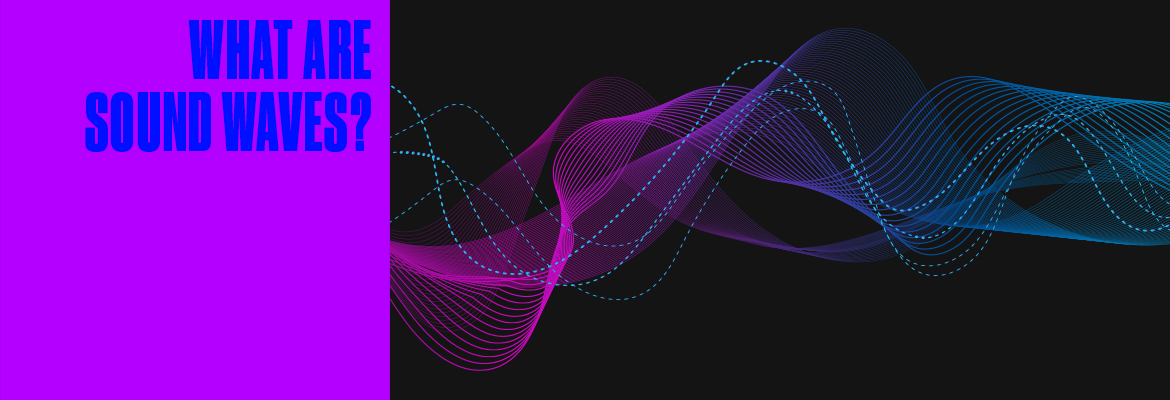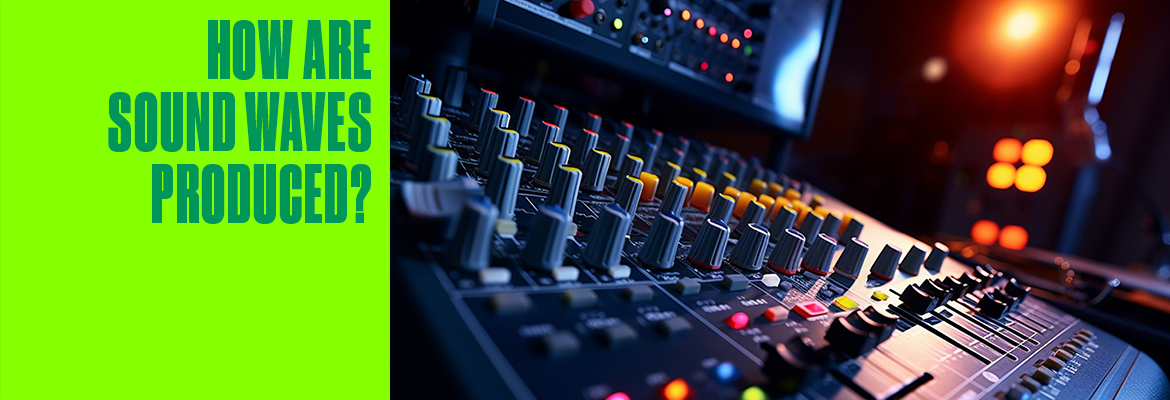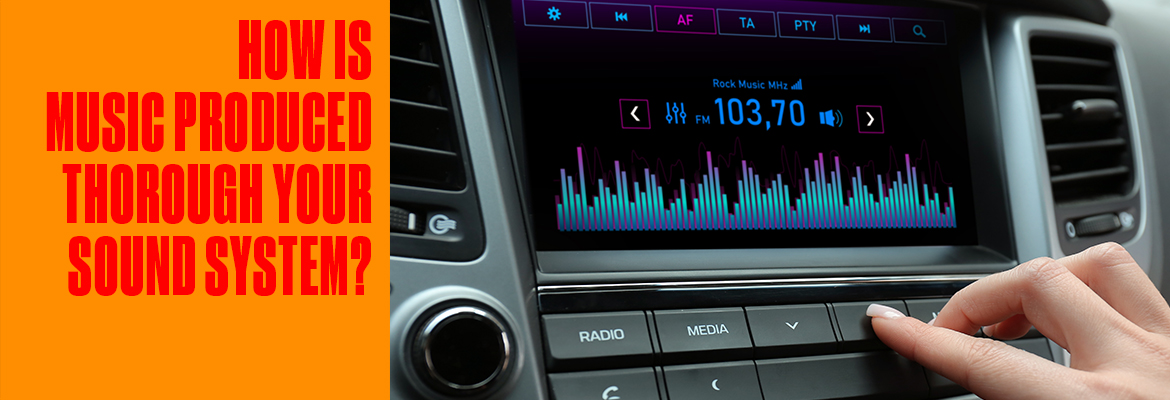
How Do Sound Waves Work In Audio Equipment?
What is sound? Sound is a vibration that propagates as an acoustic wave, through a transmission medium such as a gas, liquid, or solid. But sound is truly where people can go to receive an escape that can soothe the heart, mind, and soul. Whether you’re on the beach, taking a hike through the forest, or cruising down your favorite backroad to your favorite songs, sound is truly a place where you can go to escape reality and bring back memories of old. To understand why sound is so important, we need to understand how sound waves work within your audio equipment and fully comprehend how it can connect with the individual along with the masses.
Even before speakers and the record player were invented, sound waves have always been around us because of the world we live in. Anytime there are waves of sound either by nature, vehicles, or even animals; vibration is emitted through the transmission of an acoustic sound. Now, it is important to note that not all sound waves are created equal. Each can have different frequencies and variations depending on the kind of music you’re playing or the sounds you are hearing in the environment you may be surrounded in. When it comes to playing music through your audio system, frequency variations are going to be changing at a constant rate.
Throughout this article, you will learn how and why sound waves are so important. Furthermore, you will ultimately have a better understanding of how sound waves are created in your audio system while you’re listening to your favorite music.

What Are Soundwaves?
If you have ever heard an F-15 Eagle fighter jet flying by you at an air show, you know that more commonly than not, it is about to break the sound barrier and create a phenomenon known as a sonic boom. You’re probably wondering why learning how a fighter jet breaks the sound barrier transmits to understanding sound waves. First, you must know the definition of what sound waves are, it is the pattern of disturbance caused by the movement of energy traveling through a medium such as air, water, or material substance. Sound waves are produced by object vibrations that produce pressure waves. Now that we know what sound waves are and how they are created, we can comprehend the vibrations that are produced when a F-15 fighter jet is flying past the speed of sound, and how it creates the vibrations which are caused by the pressure waves from the jet ultimately causing objects to vibrate in proximity.
Now that you have a better comprehension of how, what, and why sound waves are produced, we can transition to learn how sound waves are transmitted through your audio system. From the initial signal source, which can be from your MP3 player, CD, cassette tape, or music device, that original signal is produced and then sent through your sound system. When the initial music signal is sent to the receiver in your radio, then to the amplifier, often it will have a very low signal strength, referred to as line level. Once that signal is received by the amplifier, that line-level signal is amplified into a higher output signal strength sufficient to power subwoofers, speakers, and supporting components to create sound waves substantial enough to produce adequate output for the listener.
Depending on power output, loudspeaker sensitivity, etc, this will greatly determine how much bass response, volume output, intelligibility/clarity, and tonal qualities of the sound waves and ultimately the listener's experience.

How Are Sound Waves Produced?
As discussed in How To Choose The Right Amplifier?, amplifiers are the link between the original sound waves that are produced by the input signal, to the frequencies in the sound waves that are being sent through your sound system, to your speakers and subwoofers. So how is this so important when comprehending how sound waves are produced? Sound waves are produced when an object vibrates, creating pressure waves. The pressure wave causes particles in the surrounding medium, such as air, water, or a solid to have a vibrational motion. Sound waves originate from various sources and can be disrupted through numerous means such as the way air travels and how the sound waves dissipate when hitting objects. When it comes to audio from your sound system these sound waves are called longitudinal waves. Which travel directly from the source signal to your amplifier and ultimately aiding your speakers, subwoofers, and supporting components creating the sound waves in producing the music you hear.
Example: when you turn up the volume of your favorite song on your sound system, the originating sound wave and its frequencies need to amplified by the original signal source for that sound wave to travel at a higher amplitude. This will increase the rate at which the frequencies vibrate amongst objects and how one’s eardrum will receive the signal. Since longitudinal sound waves travel parallel to the direction in which they are aimed, such as when you’re in a movie theatre or your car, sound systems are engineered so that the sound waves are directed towards the optimal listening experience - and immerse you in a sensory overload unlike any other.
It is very important to understand that while frequencies are variations in sound waves, they provide the judgment of how the sound is perceived as a higher or lower frequency. That is why amplifiers are so incredibly important to the transmission device to interpret how the source signal from your music choice is outputted amongst your audio components.

How Is Music Produced Through Your Sound System?
While there are many genres and variations of music, likewise, there will be many varying frequencies (pitch) of sound. Getting the maximum performance out of your audio system, whether that is in your car, truck, SXS, or boat; knowing how they work from the source is a very optimal piece of information when deciding on what audio components to purchase. How music is produced in your sound system is quite simpler than you might have imagined. Earlier we discussed how various sound waves and frequencies are produced and implemented into your sound system. This is done by the original input signal, such as when you plug your phone into your car, the original signal source, is stored on the media device signal is sent to the receiver which is also known as your radio, or head unit.
That radio or head unit, has a receiver that obtains the original signal from the media device in where the music file is transmitted to the audio systems amplifier. Once that signal is received, it takes that signal straight to your audio systems amplifier where it will amplify/increase the signal to provide enough power to generate the necessary sound wave production that can be delivered through your speakers and subwoofers. Think of your amplifier as the mediator to manage how much power (wattage), and output, are needed to supply the sound system with exactly what it needs to blast your favorite tunes. What you should know is that the better components you have in your audio system, the better the audio experience you will immerse yourself in.
Example: if you are the type of individual who listens to a wide variety of music ranging from high to low-frequency spectra, you’ll want to ensure you have the highest quality speakers, subwoofers, and amplifiers possible. The reason for this is that as sound frequencies change having a superior amplifier delivering high power (wattage) will achieve optimum clarity of the signal throughout the entire system. This will allow you to bring a sense of tranquility or excitement wherever the road takes you. Whether you’re cruising down the highway, attending your favorite concert, your local car show, or racing down the dunes in your side-by-side.
Sound is everywhere and it is a blissful feeling that you always want around you wherever you are. It is a sensory experience that you can’t get away from, understanding how it comes together will better amplify your ride and life and will benefit you in the long run to rekindle memories and make new ones along the way!
